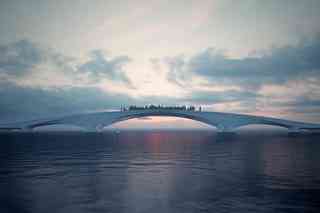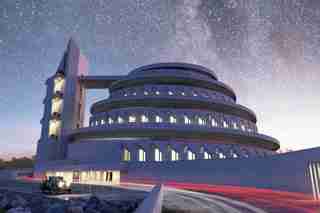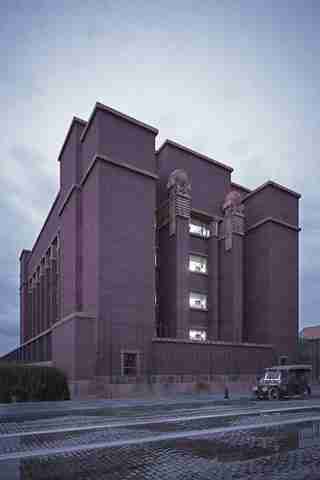Of the more than 1,100 structures that Frank Lloyd Wright designed throughout his lifetime, more than half—a whopping 660 buildings—remained unbuilt and mostly unknown, until now. And sadly, some of the architect's works have also been demolished . Thanks to a labor-intensive project undertaken by Spanish architect David Romero , fans of the prolific architect can now see what Wright’s unbuilt or demolished projects look like in 3-D renderings, as if they had been built or rebuilt. Romero partnered with the Frank Lloyd Wright Foundation to use Wright’s sketches and site plans to create the new models, which offer a glimpse into a world of architecture never materialized or were destroyed. “While we will never know the true experience of visiting an unbuilt Wright design, these renderings can convey a bit more sense of space and light than the drawings alone,” explains Stuart Graff, president and CEO of the foundation. Here, AD looks at six structures designed by the genius architect, yet never materialized or were lost to time.

Butterfly Wing Bridge (San Francisco, California)
Frank Lloyd Wright designed this elegant bridge in 1952, intending it to serve as a southern crossing of the San Francisco Bay. While San Francisco was discussing duplicating its famed Bay Bridge, Wright felt that a “quieter” design, more in tune with nature, would serve the city better. Sadly, the bridge, which included plans for two pedestrian paths and a lush, planted garden with views of the San Francisco Bay, was scrapped when plans for the underwater Transbay Tube were unveiled.

Gordon Strong Automobile Objective (Sugarloaf Mountain, Maryland)
To create this rendering, Romero referenced photographs of Wright’s Solomon R. Guggenheim Museum in New York. This structure was intended to serve as a tourist attraction, housing a planetarium, a restaurant, and a scenic overlook. “It is a pity that it could not be built. If it had, I think it would be one of his most celebrated designs,” says Romero.

Larkin Administration Building (Buffalo, New York)
Built in 1904, Buffalo’s Larkin Administrative Building was Wright’s first public work. The five-story redbrick building was demolished in 1950 and now lies buried in the Ohio Canal Basin along the Buffalo River. Romero’s re-creation of the structure includes incredibly detailed renderings that showcase the building’s elegant interior features, like a 76-foot tall skylit courtyard.
Rose and Gertrude Pauson House (Phoenix, Arizona)
Unlike other buildings on this list, the unique Rose and Gertrude Pauson house was built—but, like many Wright buildings , succumbed to a fire in 1943 when a fireplace ember ignited a curtain. Ruins of the house, which included the foundation, walls, and chimney, remained in place until 1979.
Roy Wetmore Car Repair and Showroom (Detroit, Michigan)
In 1947, Wright was commissioned to renovate the service station and car dealership for Roy Wetmore. (It’s rumored that Wetmore’s daughter was dating one of Wright’s apprentices at the time.) Plans were drawn up, and Wright’s team did complete some work on the station’s interior, but ultimately, the futurist grand plan never came to fruition. The station is still open today, and receives a few visitors a month who are aware of its architectural significance.
Trinity Chapel (Norman, Oklahoma)
This Wright-designed chapel is a departure from the architect’s typical style, boasting red walkways, a distinctive green-shingled spire, and stained glass windows. The project was commissioned by Fred Jones, a car dealer, with the intent of gifting it to the University of Oklahoma. However, upon unveiling the plans, Wright and his client realized that there had been a misunderstanding: The chapel was supposed to be adjunct to the university, not freestanding. Wright later abandoned the project.
